After many years of delays and budget overruns totaling billions of USD, the rocket developed by NASA for the mission to return to the Moon is about to make its first flight.
In this highly anticipated flight, the 98-meter-tall rocket will launch an uncrewed spacecraft into lunar orbit, 50 years after humans first set foot on this satellite during the Apollo lunar exploration program.
According to the plans of the U.S. National Aeronautics and Space Administration (NASA), if the upcoming flight is successful, the agency will send astronauts to orbit the Moon in 2024, before landing on the surface of the Earth’s natural satellite in 2025.
The rocket is scheduled to launch on the morning of August 29 (local time), from NASA’s Kennedy Space Center.
According to warnings from NASA officials, the six-week flight is expected to involve many risks and could be interrupted at any time if technical issues arise.
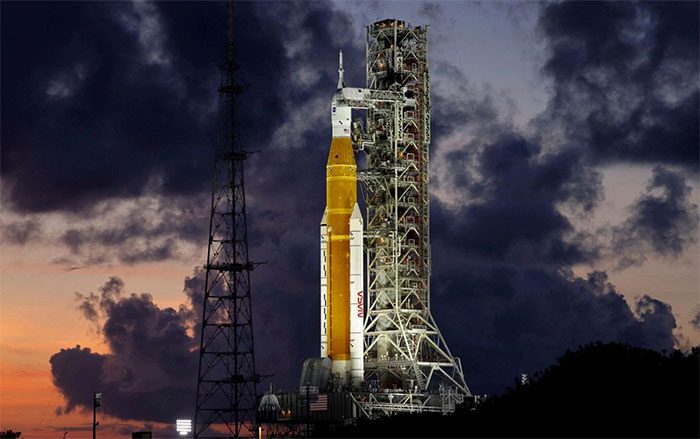
The launch vehicle and spacecraft preparing to be launched to the Moon from NASA’s Kennedy Space Center in Florida. (Photo: Reuters).
“We will challenge and push this rocket to its limits. We will test dangerous things that are prohibited in crewed flights to ensure the highest safety of the rocket,” said NASA Administrator Bill Nelson in an interview with AP.
John Logsdon, founder of the Space Policy Institute at George Washington University, stated that the launch on August 29 is of great significance. Given the budget overruns and the long intervals between launches, the future of the space exploration program could be affected if the flight on August 29 fails.
“This will be the first step of a long-term exploration program, with plans to send humans to the Moon, Mars, and beyond. Will America have the will to continue the space program if the upcoming launch fails?” Logsdon added.
The cost of each launch reaches over 4 billion USD. If all expenses since the program began about a decade ago are considered, including the lunar landing mission in 2025, the Artemis space exploration program is expected to cost over 93 billion USD.
Below are some noteworthy details of the first launch of the Artemis space exploration program.
Launch Vehicle
The new launch vehicle – named Space Launch System (SLS) – will be smaller than the Saturn V rocket, which was used to send 24 astronauts of the Apollo program to the Moon half a century ago. However, the SLS rocket is more powerful, capable of producing 4 million kilograms of thrust.
Unlike the Saturn V rocket, the SLS will be equipped with two additional solid rocket boosters designed based on the design used for NASA’s space shuttles. Similar to shuttle launches, the solid rocket boosters will detach from the SLS two minutes after the rocket is launched. However, these two boosters will not be reused.
Two hours after launch, the second stage of the rocket will separate to send the Orion spacecraft to the Moon.
Orion Spacecraft
Named after one of the brightest constellations in the sky, the Orion spacecraft is designed with high automation. Standing over 3 meters tall, Orion can carry 4 astronauts compared to just 3 on the Apollo spacecraft.
In the flight on August 29, a mannequin dressed in an orange spacesuit will be placed in the commander’s seat with sensors to monitor the rocket’s vibrations and acceleration.
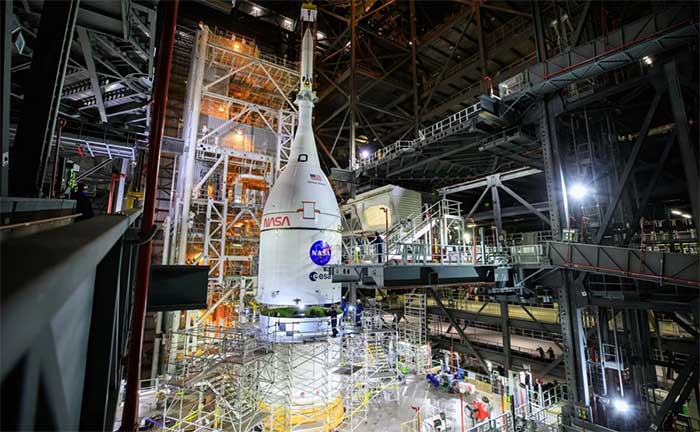
The Orion spacecraft fully assembled with the launch abort system, lifted by engineers for integration with the SLS on October 20, 2021. (Photo: NASA).
Meanwhile, 2 other mannequins – made from materials similar to human bodies and without arms or legs – will be equipped with sensors to measure radiation levels in space, one of the biggest dangers to astronauts. One of these mannequins will wear a radiation protection suit produced by Israel.
Unlike the SLS rocket, the Orion spacecraft was previously launched into Earth orbit in 2014. In the upcoming launch, the Orion spacecraft will be equipped with a module from the European Space Agency containing propulsion systems and solar panels mounted on 4 wings.
Flight Plan
The flight on August 29 of the Orion spacecraft is expected to last 6 weeks from its launch in Florida until it lands in the Pacific Ocean, longer than twice the duration of crewed flights to push the systems on board to their limits.
The Orion spacecraft will take nearly a week to reach the Moon, which is 386,000 km from Earth. Upon arrival, Orion will enter a high orbit around the Moon, with its farthest point being 61,000 km from the Earth’s natural satellite. At this point, the Orion spacecraft will be 450,000 km from Earth, greater than the distance achieved by the Apollo spacecraft.
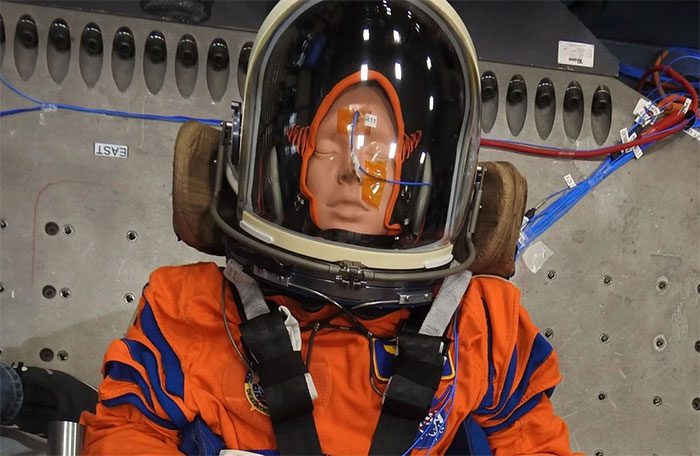
The mannequins used to collect data during the first flight to the Moon of the Artemis program. (Photo: NASA).
The biggest test will occur in the final phase of the flight, when the Orion spacecraft re-enters the Earth’s atmosphere at a speed of 40,000 km/h before landing in the Pacific Ocean.
The heat shield used on the Orion spacecraft is made from the same material as the shield on the Apollo spacecraft to withstand temperatures up to 2,750 degrees Celsius during re-entry. However, the heat shield on the Orion spacecraft is also designed to withstand greater re-entry temperatures for future missions to Mars.
Cargo on Board
In addition to the 3 mannequins, the Orion spacecraft will also carry various other cargo for space research purposes. This includes 10 small satellites called CubeSats that will be launched sequentially during Orion’s journey to the Moon.
However, due to being installed more than a year ago and the continuous delays in the SLS launch schedule, the batteries of half of the CubeSat satellites have not been recharged.
Given the high risk of the flight and the low cost of the satellites, NASA predicts that some CubeSat satellites will not be operational after being launched from the Orion spacecraft. However, the remaining satellites, equipped with solar sails, are expected to operate normally and be used to explore near-Earth asteroids.
Additionally, to commemorate the success of the Apollo exploration program, the Orion spacecraft will carry several rock samples collected by Neil Armstrong and Buzz Aldrin after the duo landed on the Moon during the Apollo 11 flight in 1969.
Furthermore, Orion will also carry a screw from the engine of the Apollo 11 spacecraft, found at sea about ten years ago.
NASA has announced that 3 Apollo astronauts including Walter Cunningham, Tom Stafford, and Harrison Schmitt – one of the last individuals to set foot on the Moon – will attend the launch of the Orion spacecraft.
Comparison between Apollo and Artemis
After 50 years, the Apollo space program remains one of NASA’s greatest achievements. Utilizing technology from the 1960s, NASA took only 8 years from sending its first astronaut, Alan Shepard, into space to landing Armstrong and Aldrin on the Moon.
In contrast, although it builds on the foundation of the previous lunar exploration program named Constellation, the Artemis program has now stretched over 10 years without a single flight being conducted.
From 1969 to 1973, a total of 12 NASA astronauts set foot on the Moon, with each landing lasting no more than 3 days.
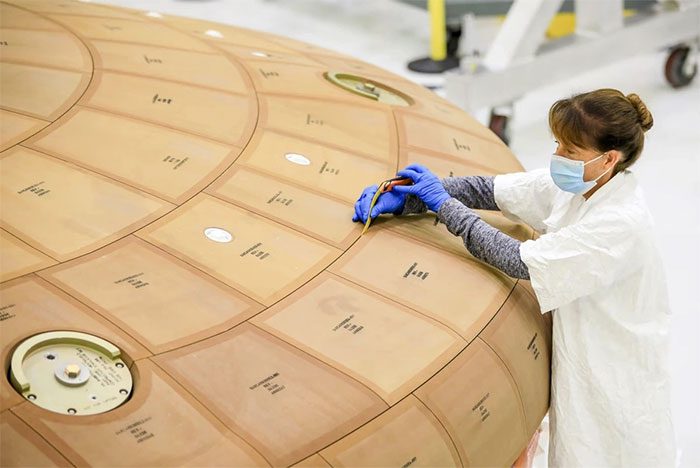
Engineers working with over 180 heat shields of Orion at Kennedy Space Center. The Orion spacecraft will endure temperatures of 2,750 degrees Celsius during re-entry to Earth. (Photo: NASA).
For the Artemis program, NASA will select participants for the Moon flight from its current list of 42 astronauts. Additionally, the duration of each flight on the Moon will last at least a week. The goal of the program is to establish a long-term human presence on the Moon, paving the way for future Mars exploration missions.
Nasa Administrator Nelson stated that he would soon announce the list of astronauts who will participate in the first crewed flight to the Moon of the Artemis program after the Orion spacecraft safely returns to Earth.
What’s Next?
There is still much work to be done before astronauts can once again set foot on the Moon. A second test flight, expected to occur in 2024, will send 4 astronauts around the Moon. About a year later, NASA will conduct another flight with 4 astronauts, two of whom will land at the Moon’s South Pole.
As the Orion spacecraft does not carry a module capable of landing on the Moon, NASA has contracted SpaceX’s Starship for the first lunar landing of the Artemis program. Additionally, two other companies have been hired to manufacture the suits used during lunar excursions.
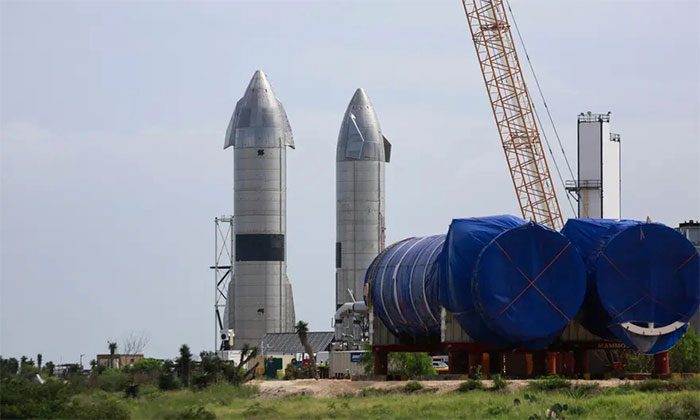
Two SpaceX Starship spacecraft under construction in Texas. (Photo: Shutterstock).
The Starship spacecraft will dock with Orion in lunar orbit before transporting two astronauts to the Moon’s surface and returning them to the Orion spacecraft after the mission is complete. So far, the Starship has only achieved an altitude of 10 kilometers during test flights.
SpaceX founder and CEO Elon Musk plans to launch the Starship into Earth orbit using the company’s Super Heavy rocket before conducting an uncrewed flight to land on the Moon.
However, to reach the Moon, the Starship will need to be refueled from a space station in Earth orbit.





















































